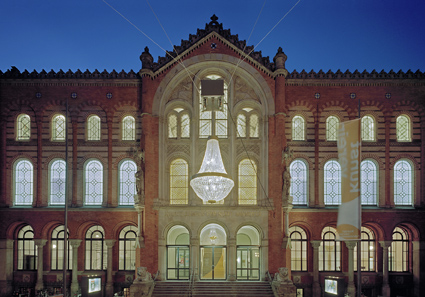 | ||
The Hanoverian school of architecture is a school of architecture that was popular in Northern Germany in the second half of the 19th century, characterized by a move away from classicism and neo-Baroque and distinguished by a turn towards the neo-Gothic. Prominent representatives of this school are its founder, Conrad Wilhelm Hase, who was responsible for a construction boom of buildings designed in this style, and his student Edwin Oppler.
Contents
History and origins
The spread of this style of architecture in the region of Hanover can be traced back to the work of the Hanoverian Church consistorial master builder and architecture professor Conrad Wilhelm Hase (1818-1902) and his teachings at the Technical University of Hanover. There he taught from 1849 to 1894, among other subjects, Entwerfen öffentlicher und privater Gebäude ("Design of public and private buildings"), Höhere Baukunst (Advanced Architecture), Formenlehre ("Structures"), and Ornamentik ("Ornamentation").
With traditional, conservative principles such as "adherence to the old" and "truth and clarity in art", Hase developed a contemporary style which favored stylistically purer, medieval forms, in a move away from Georg Laves' neo-classical, neo-Baroque architectural style acquired from France. His architectural style - dubbed occasionally by his supporters and critics as "Hasik" - was marked by the medieval brick Gothic design. He insisted that the structure of the building and the building materials used - preferably local - remain visible to the viewer.
Hase's students were not only senior engineering officials and well-known architects, but they also taught at trade schools, for example in Eckernförde, Hamburg, and Nienburg. At the first major North German building trade school in Holzminden, there was a group of Hase's admirers in the teachers' association Kunstclubb ("Art club") who sought to spread the Hanoverian school in the 1860s.
